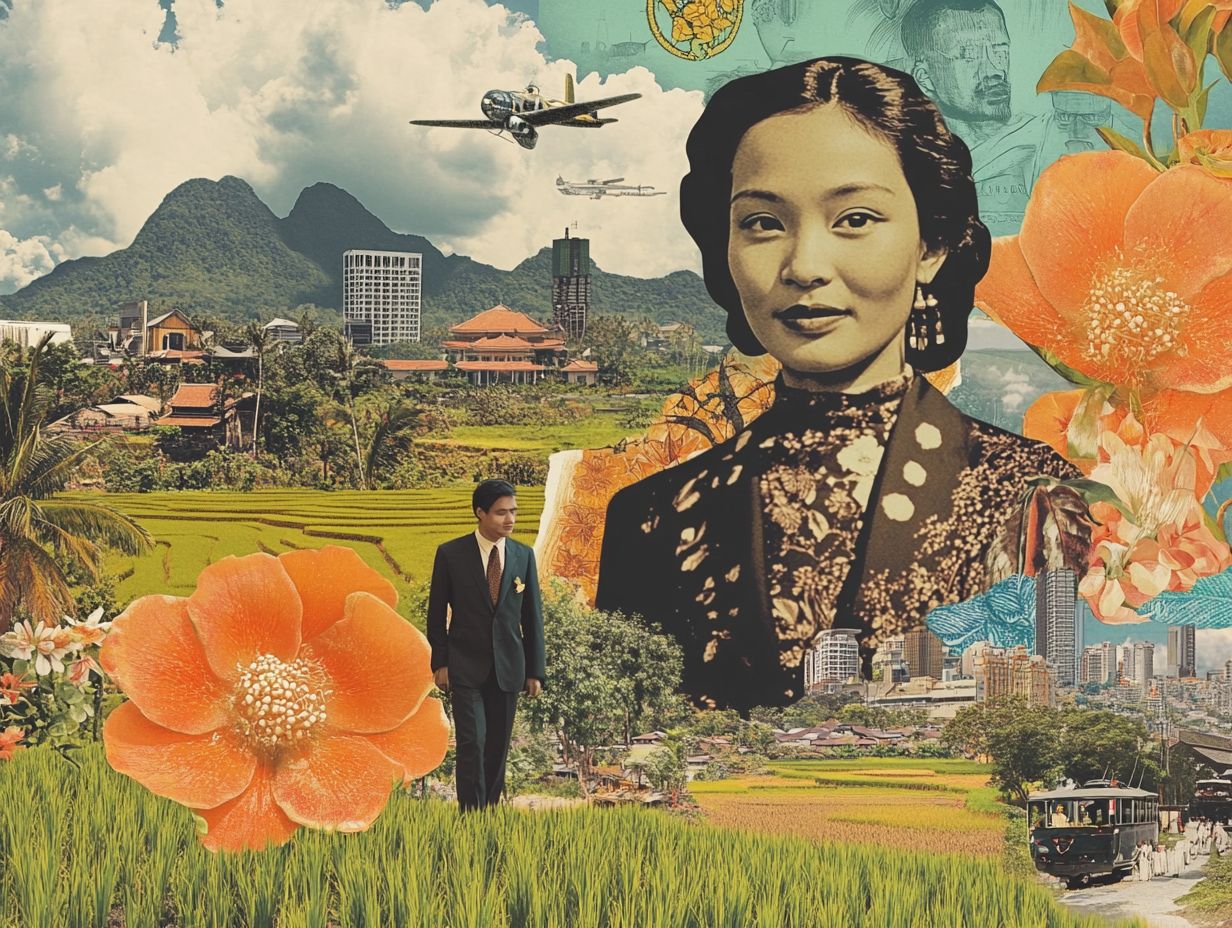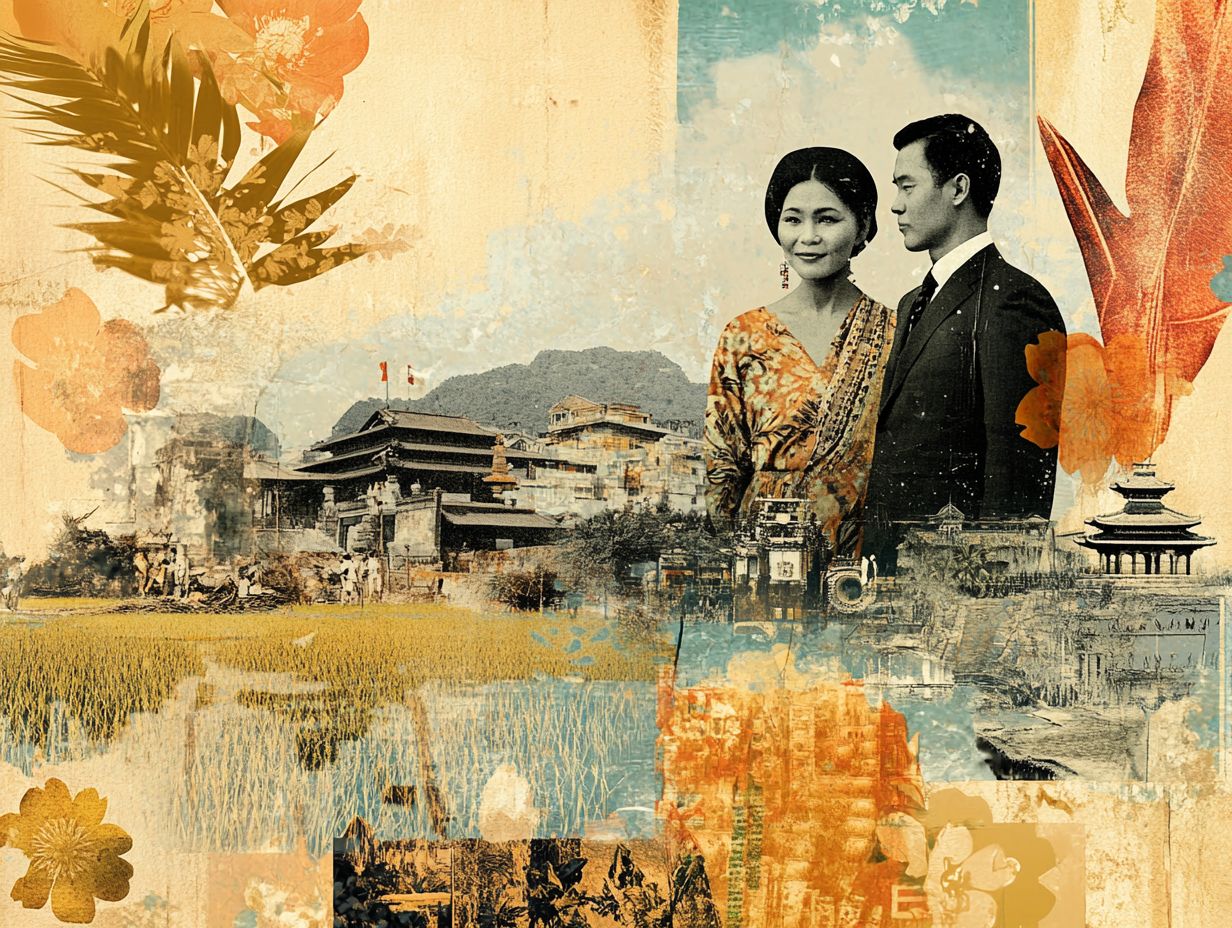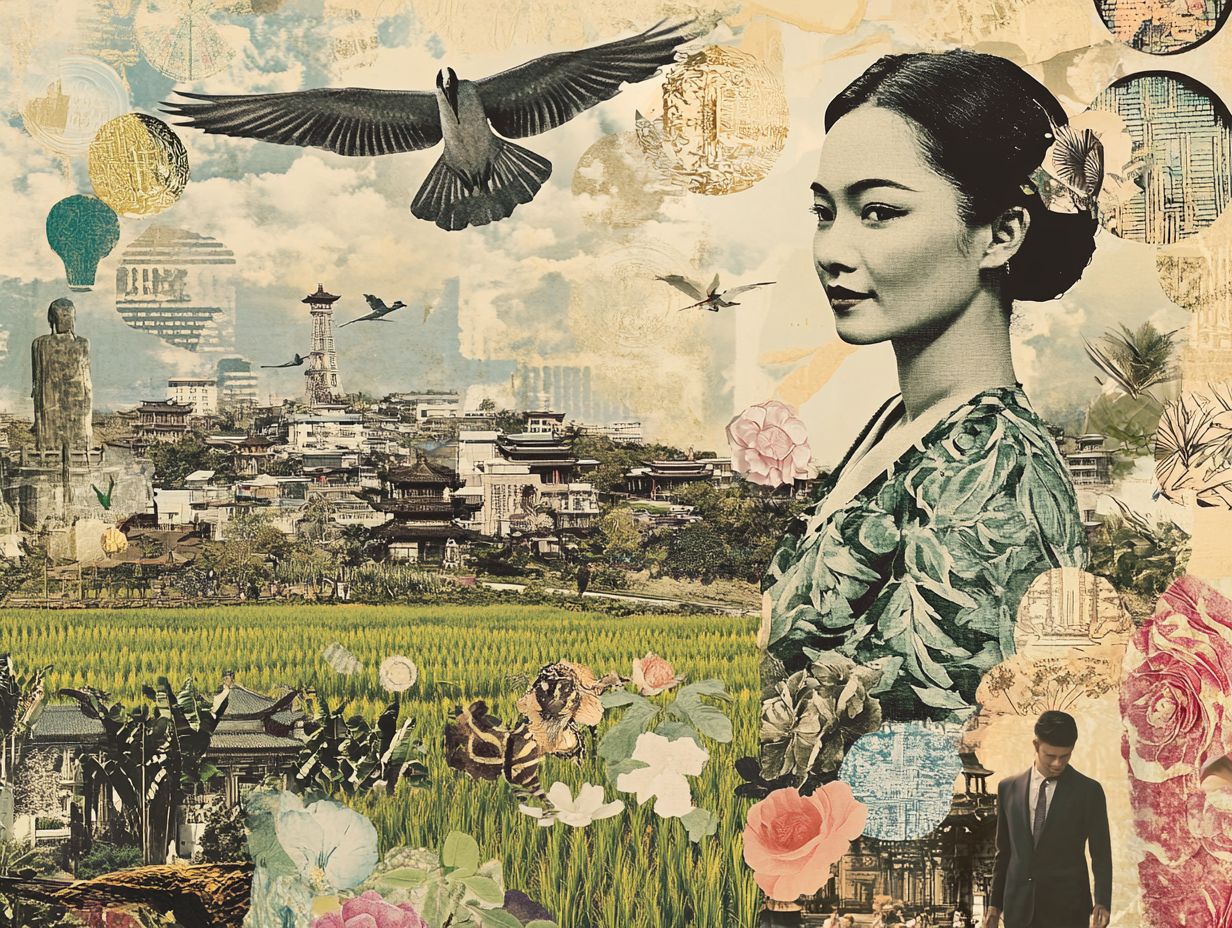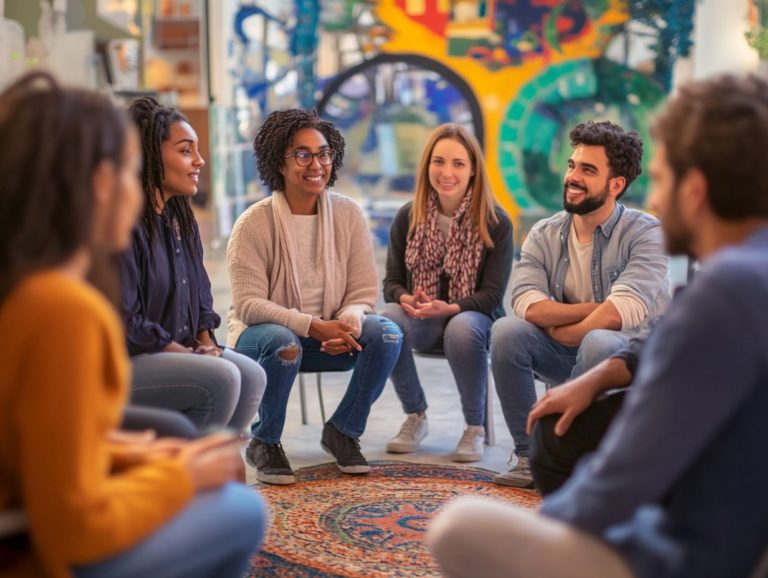Understanding Gender Roles in Different Cultures
Gender roles are intricately woven into the fabric of societies, shaping perceptions of identity, behavior, and expectations.
Join us as we dissect traditional norms and values in Western cultures, examining their evolution in today s dynamic landscape. You ll also embark on a journey into Eastern cultures, uncovering the cultural influences that define gender expectations and the persistent challenges surrounding gender equality.
These roles profoundly affect individuals and communities. We must confront stereotypes and discrimination urgently. This is a complex and vital topic, and we invite you to dive in with us.
Contents
- Key Takeaways:
- Gender Roles in Western Cultures
- Gender Roles in Eastern Cultures
- Impact of Gender Roles on Society
- Frequently Asked Questions
- What are gender roles?
- How do gender roles differ in different cultures?
- What are some examples of different gender roles in different cultures?
- How are gender roles in different cultures influenced?
- Why is it important to understand gender roles in different cultures?
- How can we promote understanding and acceptance of diverse gender roles?
Key Takeaways:

- Gender roles vary greatly across different cultures, and understanding these differences is crucial in promoting diversity and inclusion.
- Traditional gender norms and expectations are being challenged and reshaped in modern society, leading to progress towards gender equality.
- Addressing gender stereotypes and discrimination is essential in creating a more equal and inclusive society for individuals and communities worldwide.
Definition and Importance
Understanding gender roles is essential for analyzing societal dynamics. These roles are deeply embedded in economic considerations and cultural norms. They influence labor force participation and perpetuate distinctions that contribute to gender inequality. Recognizing these roles is crucial for helping women gain power and addressing parental authority within family structures.
Defined roles often dictate which jobs are considered suitable for different genders and the associated wages, creating significant disparities in economic contributions. For example, in many cultures, women are traditionally expected to assume caregiving roles. This expectation restricts their workforce participation and, consequently, their financial independence.
Research indicates that in societies promoting shared parental responsibilities, women are more likely to pursue careers, cultivating a more equitable labor market. This disparity is strikingly evident across various cultural contexts, such as the contrasting attitudes towards women in the workforce in the Middle East compared to Scandinavia, where gender equality policies are more prevalent and actively bolster family dynamics.
Gender Roles in Western Cultures
In Western cultures, traditional gender roles have been historically influenced by deeply rooted cultural norms and economic factors. These elements dictate expectations for both men and women, reinforcing gender stereotypes that frequently constrain individual potential and hinder societal progress.
Traditional Gender Norms and Values
Traditional gender norms and values in Western cultures are characterized by specific expectations assigned to men and women. These expectations often stem from historical precedents and cultural contexts that perpetuate gender stereotypes. They shape societal behavior and influence individual identity.
You can trace these expectations back to ancient societal structures where roles were distinctly defined men as providers and women as caregivers. In today’s world, these norms manifest in various ways, from the division of household responsibilities to gender representation in professional fields.
In many families, women are typically expected to handle the majority of domestic duties. Meanwhile, men are socially conditioned to focus on their careers. In academia, gender biases can sway the encouragement and opportunities extended to students, further entrenching stereotypes about what is deemed appropriate for each gender.
These deeply rooted beliefs not only affect personal relationships but also hinder societal progress on a larger scale.
Changing Gender Roles in Modern Society

Changing gender roles in modern society reflect a significant shift toward women’s enablement.
This transformation is driven by programs that promote gender equality, challenging outdated beliefs and promoting fairness.
These changes are real and impactful, manifesting in the dynamic interplay of economic developments, enhanced access to education, and vigorous activism.
As more women enter the workforce, households increasingly embrace dual-income structures, redistributing responsibilities and challenges along the way.
Activism plays a crucial role in advocating for policies that support equality, such as paid parental leave and affordable childcare.
Educational advancements enable individuals to pursue non-traditional career paths, further blurring the lines of gendered expectations.
Programs like UN Women’s Gender-Responsive Economic Actions for the Transformation of Society demonstrate how impactful interventions can uplift entire communities and foster lasting change.
Gender Roles in Eastern Cultures
In Eastern cultures, gender roles are profoundly shaped by agricultural traditions, cultural influences, and societal structures like the practice where a wife moves to her husband’s family home (patrilocal) and the practice where a husband moves to his wife’s family home (matrilocal).
These frameworks dictate gender expectations and responsibilities, intricately weaving them into the fabric of families and communities.
Understanding this dynamic offers insight into the nuanced ways these roles are defined and upheld.
Cultural Influences on Gender Expectations
Cultural influences play a pivotal role in shaping gender expectations in Eastern societies, where traditional gender roles often dictate the division of labor and responsibilities.
These norms can simultaneously enable and constrain individuals, reinforcing societal standards that are deeply ingrained.
The roots of these norms often trace back to longstanding historical narratives, religious teachings, and socio-economic conditions that have evolved over centuries.
For instance, in many Eastern cultures, you might notice that the expectation for women to primarily occupy domestic roles contrasts sharply with their increasing presence in the workforce.
This creates a complex dynamic at play.
A compelling example is seen in the rising participation of women in educational sectors across countries like India.
While cultural pushback is still prevalent, it is gradually lessening. This shift challenges conventional expectations and highlights the intricate dance between tradition and modernity.
It prompts a reevaluation of what it truly means to embrace gender identity in these societies.
Challenges and Progress in Gender Equality
Despite the challenges posed by ingrained gender distinctions, significant progress toward gender equality is being made through advocacy for women s enablement and the implementation of programs designed to dismantle traditional barriers.
In many Eastern cultures, these barriers often take the form of deeply rooted societal norms and economic constraints that restrict women s access to education, healthcare, and employment opportunities.
Cultural resistance can perpetuate stereotypes, making it difficult for women to assert their rights and amplify their voices.
However, recent advancements, fueled by grassroots organizations and international agencies, are beginning to shift this narrative.
Initiatives that educate both men and women about the importance of gender equality are cultivating a more inclusive environment.
Programs that offer financial resources and training enable women to take on leadership roles, clearly demonstrating that change is not only possible but actively occurring.
Impact of Gender Roles on Society

The impact of gender roles on society is profound, shaping not only individual lives but also the intricate dynamics of communities.
These roles perpetuate issues like gender inequality, constraining opportunities for growth and development across various sectors.
By understanding this influence, you can begin to recognize the broader implications of these roles and how they affect collective progress.
Effects on Individuals and Communities
The effects of gender roles on you and your community can be quite profound! These roles influence everything from personal aspirations to how interactions unfold, perpetuating cycles of gender inequality and undermining potential social cohesion.
You may find these constraints particularly evident in employment opportunities. Women often find themselves guided toward lower-paying positions despite their qualifications. Meanwhile, men are frequently pushed into leadership roles that may not align with their interests or skills. This dynamic seeps into educational access, where societal expectations might discourage girls from pursuing science, technology, engineering, and math (STEM) fields or boys from exploring the arts, ultimately limiting their future prospects.
In social relationships, these rigid roles create barriers that foster environments lacking open communication and mutual respect. Research has shown that communities embracing more equitable gender expectations achieve greater economic success and improved interpersonal dynamics. This highlights the urgent need to address these inequalities for the benefit of everyone involved!
Addressing Gender Stereotypes and Discrimination
Addressing gender stereotypes and discrimination is essential for fostering an inclusive society where you can thrive without the constraints of traditional gender roles. This effort not only supports women’s enablement but also paves the way for equitable opportunities for everyone!
By implementing comprehensive educational programs that challenge outdated perceptions, you can help cultivate a more progressive mindset among young people in your community. Advocacy is equally vital! Organizations tirelessly work to raise awareness and influence public opinion.
Consider mentorship initiatives, which empower young girls by connecting them with accomplished female role models. This demonstrates that leadership and achievement are attainable regardless of gender. Policy changes, such as ensuring equal pay, are crucial in dismantling systemic barriers.
Together, these strategies create a robust framework for equality, ultimately benefiting society as a whole!
Frequently Asked Questions
What are gender roles?

Gender roles refer to the societal expectations and norms that define behavior, attitudes, and responsibilities of individuals based on their perceived biological sex. These roles significantly impact everyday life and opportunities.
How do gender roles differ in different cultures?
Gender roles can vary significantly across cultures, influenced by factors such as history, religion, and social customs. Some cultures have strict gender roles, while others embrace more fluid and diverse definitions.
What are some examples of different gender roles in different cultures?
In some cultures, men are expected to be the breadwinners and decision-makers, while women are responsible for caregiving and domestic tasks. In others, both men and women share equal roles in providing for the family and participating in household duties. Some cultures also recognize a third gender or non-binary individuals.
How are gender roles in different cultures influenced?
Gender roles are influenced by a variety of factors, including history, religion, economics, and social norms. These influences shape expectations and behaviors of individuals based on their gender identity.
Why is it important to understand gender roles in different cultures?
Understanding gender roles in various cultures promotes cultural sensitivity and inclusivity. It challenges gender stereotypes and fosters gender equality and diversity.
How can we promote understanding and acceptance of diverse gender roles?
We can promote understanding and acceptance of diverse gender roles by educating ourselves and others about different cultures. Actively challenging and rejecting gender stereotypes and supporting individuals who do not conform to traditional roles is equally important!






